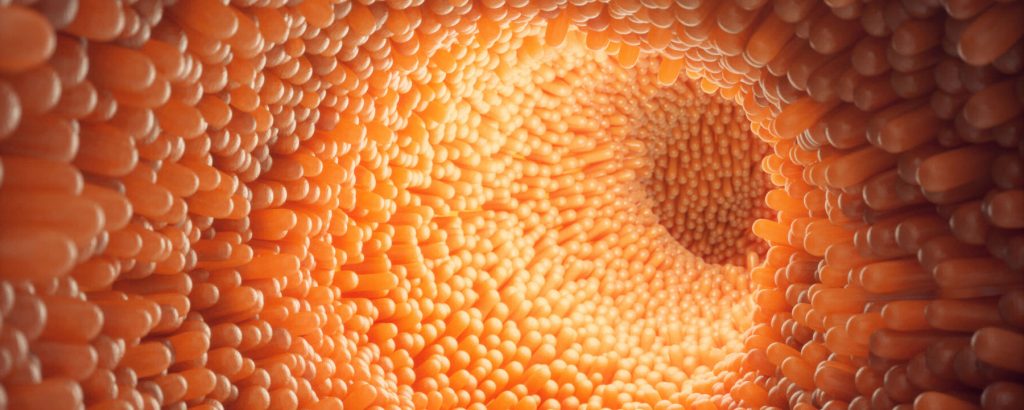Highlights
•
Maternal fiber deprivation lastingly and detrimentally influenced microbiome of offspring•
Maternal fiber deprivation resulted in low-grade gut inflammation in offspring•
Offspring of fiber-deprived mice were highly prone to develop obesity•
Enriching maternal diet with fiber restored microbiome of offspring and prevented obesity
Summary
Diet, especially fiber content, plays an important role in sustaining a healthy gut microbiota, which promotes intestinal and metabolic health. Another major determinant of microbiota composition is the specific microbes that are acquired early in life, especially maternally. Consequently, we hypothesized that alterations in maternal diet during lactation might lastingly impact the microbiota composition and health status of offspring. Accordingly, we observed that feeding lactating dams low-fiber diets resulted in offspring with lasting microbiota dysbiosis, including reduced taxonomic diversity and increased abundance of Proteobacteria species, despite the offspring consuming a fiber-rich diet. Such microbiota dysbiosis was associated with increased encroachment of bacteria into inner mucus layers, low-grade gut inflammation, and a dramatically exacerbated microbiota-dependent increase in adiposity following exposure to an obesogenic diet. Thus, maternal diet is a critical long-lasting determinant of offspring microbiota composition, impacting gut health and proneness to obesity and its associated disorders.
Introduction
Humanity is increasingly afflicted with an epidemic of obesity and the inter-related metabolic disorders it promotes, especially type 2 diabetes.1,2 The obesity epidemic has been associated with increased availability of highly processed diets, which are typically high in fat and simple carbohydrate and low in fiber. Such diets have highly likely been an essential driver of the obesity epidemic.3,4 However, the extent to which persons with access to such diets develop obesity is highly variable5 and, moreover, continues to increase even in regions where such diets have been highly prevalent for decades, thus suggesting that additional factors are playing a role in driving the obesity epidemic. Determinants of proneness to obesity are not well understood.6 Epidemiologic studies indicate that proneness to obesity is heritable, but efforts to define specific genetic links to this phenotype have had only limited success, thus suggesting roles for other potentially heritable characteristics such as dietary practices and gut microbiota composition, both of which also have potential to influence metabolic phenotype.7,8 These factors are inter-related in that diet modulates one’s gut microbiota and, consequently, the microbiome that is vertically transmitted to offspring.9,10 Thus, diet not only influences metabolism of the individual consuming it, but, rather, may also exert a microbiota-dependent influence over the metabolic phenotype of their offspring. In considering approaches to investigate such impacts, we reasoned that the effect of maternal diet on offspring microbiome might be particularly strong during lactation since this is the window during which microbiota are acquired and shaped.11,12,13 Moreover, we reasoned that particularly strong impacts might result from lactating dams consuming low-fiber compositionally defined diets, which we have observed result in stark rapid microbiota remodeling.14,15 Hence, we examined how feeding lactating dams compositionally defined low-fiber diets, with high- or low-fat content, influenced microbiota, intestinal health, and metabolic status of offspring that were, themselves, weaned onto the fiber-rich grain-based chow (GBC) diets typically used to maintain mice in biomedical research. We also examined how maternal diet influenced offspring later in life following exposure to an obesogenic diet. We observed that altering the maternal diet in this manner indeed impacted offspring microbiomes, which associated with low-grade inflammation and mild basal metabolic phenotypes but conferred dramatically elevated proneness to diet-induced obesity.
Results
Feeding lactating dams low-fiber diets impacted offspring microbiome, intestine, and metabolism
Mice used in biomedical research have classically been maintained on grain-based rodent chow (GBC). GBC is comprised of relatively unrefined ingredients that result in high batch to batch variability that confounds diet-based research thus prompting use “open-source” diets, which are compositionally well defined and comprised of relatively invariant components.16,17 Its variability notwithstanding, GBC is naturally rich in fiber (15%–25% by weight), including soluble/fermentable fiber, which nourishes gut microbiota, thereby promoting intestinal and metabolic health.14,18 In contrast, open-source control diets classically contain only 5% fiber and are thus considered low-fiber diets.18 Furthermore, the fiber used is typically cellulose, which is insoluble and highly resistant to fermentation. Consequently, such low-fiber diets fail to support a healthy gut microbiota, resulting in epithelial stagnation, low-grade gut inflammation, and promotion of obesity, especially when such low-fiber diets are also rich in saturated fats.14 Although diet-induced changes in gut microbiota are reversible,19 we hypothesized that diet-induced microbiota dysbiosis occurring during lactation might lastingly and detrimentally imprint the host-microbiota relationship in their offspring. As schematized in Figure 1A, we tested this hypothesis by switching the diet of lactating dams from GBC to a low-fiber low-fat diet (LF-LFD) or a low-fiber high-fat diet (LF-HFD) shortly following delivery of pups. LF-HFD, which derives 60% of its calories from fat, seeks to model a “fast-food” diet while our use of LF-LFD aimed to elucidate relative roles of high-fat versus low-fiber. Lactating diets were maintained until pups were weaned at 3 weeks, of age, at which time fecal microbiomes and metabolic phenotype of dams and pups were examined…







